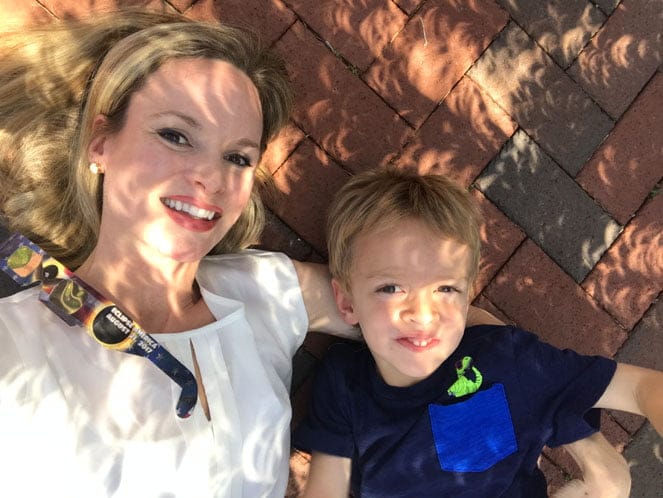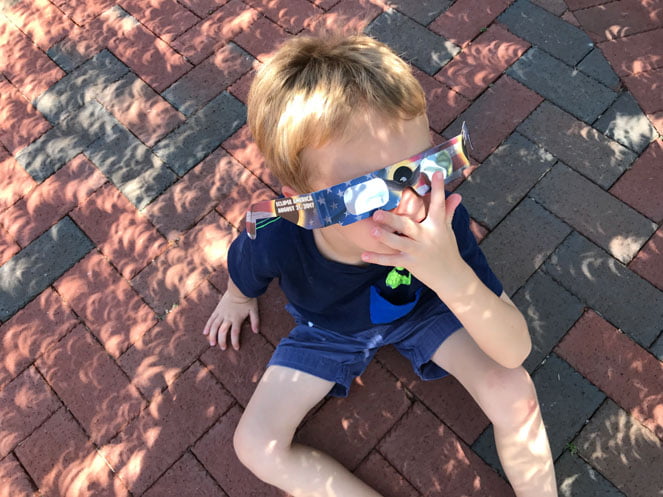How to Safely View April’s Solar Eclipse in Tampa Bay
The Great American Solar Eclipse is about to make its way across the United States on Monday, April 8, 2024, and this spectacular show will be partially visible from Tampa Bay!
This will be the last total solar eclipse in the United States until 2044, so it's truly something special to experience with your kids. The Tampa Bay area will be within the totality of a solar eclipse the following year in 2045.
We're turning to José Cotayo and Janet White with MOSI for expert advice on how to view the solar eclipse from Tampa Bay and even how you can attend a viewing party at the museum.
Related: Solar Eclipse Watch Parties in Tampa Bay
*As always, our content is written for people, by people.
Meet the Experts:
- José Cotayo, Education Specialist at MOSI and a NASA/JPL Solar System Ambassador volunteer
- Janet White, MOSI's Director of Education
What time will we see the solar eclipse in Tampa Bay?
We'll see the solar eclipse on Monday, April 8 starting at about 1:43 pm, with the peak at about 3 pm before it ends at 4:15 pm.
While we're not in the path of totality where the sun is completely blocked by the moon, we will see about a 60% blockage of the sun.
If you remember the Annual Solar Eclipse in October 2023, we also experienced a partial eclipse here in Tampa Bay. It didn't get any darker outside, but it did seem as if there was a slight brownish tint. Most people probably wouldn't have noticed if they weren't aware a partial eclipse was happening.
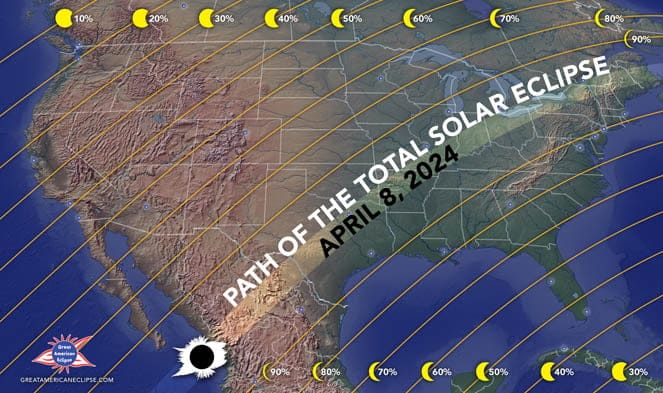
What is an eclipse and what makes it so special?
The Sun's diameter is about 400 times larger than the Moon's. It also lies about 400 times farther away. Thanks to this incredible coincidence, the Sun and the Moon appear to be roughly the same size in the sky from our vantage point here on Earth.
This means that when the orbital geometry of the Sun, Moon, and Earth is just right, we can experience eclipses!
But wait, then why don't we see a solar eclipse every new moon? That's because the Moon's orbit around the Earth is at a slight angle, so it sometimes lies just “above” or “below” a direct line from the Sun to the Earth and the Moon's shadow extends out to space and does not cast onto our planet.
Will we be able to see the eclipse in Tampa Bay?
In Florida, we are not in the path of totality, but we will certainly see a change if we view the Sun safely. The Moon will block about 60% of the Sun’s solar disk. It is never safe to look directly at the Sun—even during an eclipse—without appropriate safety gear.
Regular sunglasses are not enough to protect your eyes for direct solar viewing; you must use eclipse glasses that meet the ISO 12312-2 standard or a welder's mask that is shade #12 and that is free of lens scratches.
Again, never look directly at the Sun without proper filtration.
Additionally, it should ideally be less than three years old. I can't stress it enough: please do not jeopardize your vision!
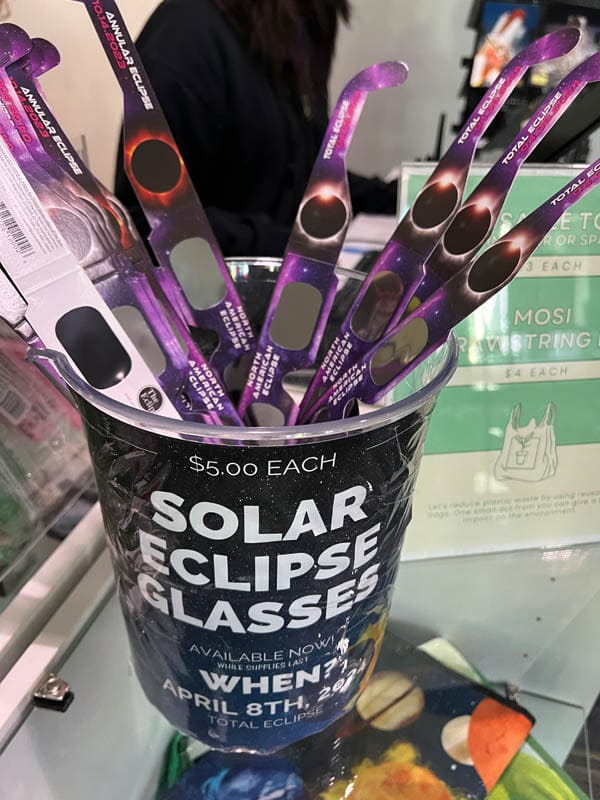
Do you need all of that fancy gear just to experience the eclipse?
No, you only need the fancy solar eclipse gear if you plan to observe the Sun directly. For indirect solar viewing, all you need is a way to simulate a pinhole projector! No supplies? No problem!
How to make a pinhole projector to view solar eclipse.
All you need is a sheet of paper and a saltine or Ritz cracker; turn your back away from the Sun and hold up the cracker in front of the sheet of paper. The sunlight will pass through the little holes in the cracker and project the eclipsed Sun onto the paper.
Actually, this works with anything that has small holes in it like a colander, an index card with a hole punched through it, or even loosely overlapped fingers! It is important to note that you are not looking through the pinhole, but using it to project the image onto another surface. Remember, your back faces away from the Sun!
If you are near some trees, take some time to look down at the shadows — the leaves will act as a pinhole projector and the resulting image should be quite a sight.
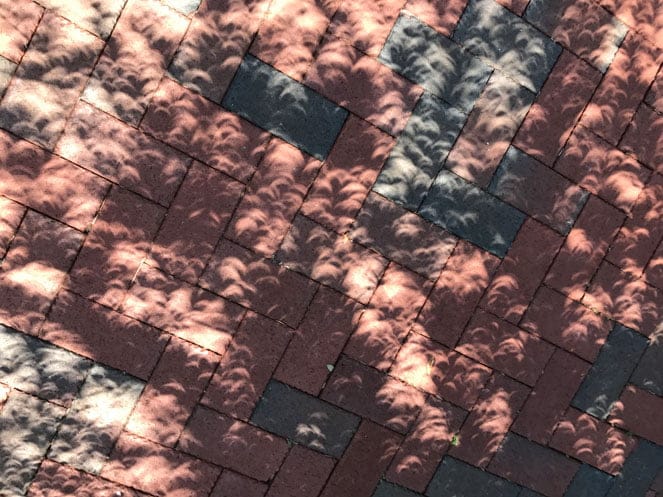
Unique impacts of a solar eclipse.
During an eclipse, even a partial one like what we will experience, animals can behave differently due to a subtle decrease in temperature and light intensity — the sounds of nature tend to become more pronounced as well, something to look out for as the eclipse progresses.
If you do make it outdoors for the eclipse, which I encourage, remember to stay hydrated and dress comfortably! But if you can't make it outside, watching a live stream from the comfort of an air-conditioned room is a close second.
How to view solar eclipse at MOSI
Join our watch party! MOSI will host a Solar Eclipse Celebration, included with MOSI admission, in its outdoor Science Park on Monday, April 8, from 1:30 p.m. to 4:00 p.m.
Guests can join in hands-on Sun-themed science activities, watch live streams of the eclipse along the exhibit path, and use Sun-safe solar telescopes staffed by a team of MOSI astronomers.
Eclipse glasses will be available for purchase.
What if I can’t make it to MOSI?
If you can’t join the Solar Eclipse Celebration at MOSI, and don’t have eclipse glasses, you can still experience it.
José says to grab anything with small holes like a colander from your kitchen. Hold it a little above the ground and look down—you’ll see eclipse-shaped shadows cast on the ground. Also, be sure to look down at the shadows beneath trees—the leaves act as pinhole projectors, resulting in a memorable sight!
MOSI's outdoor Science Park area offers a great chance to observe the event, and if you forget to bring your eclipse glasses, we have some available for purchase.
Related: NEW experiences debut at MOSI, including a restaurant!
When is the next solar eclipse?
As we mentioned at the start, following the eclipse on April 8, the next total solar eclipse to cross the contiguous United States will take place in 2044, so don't miss it!
